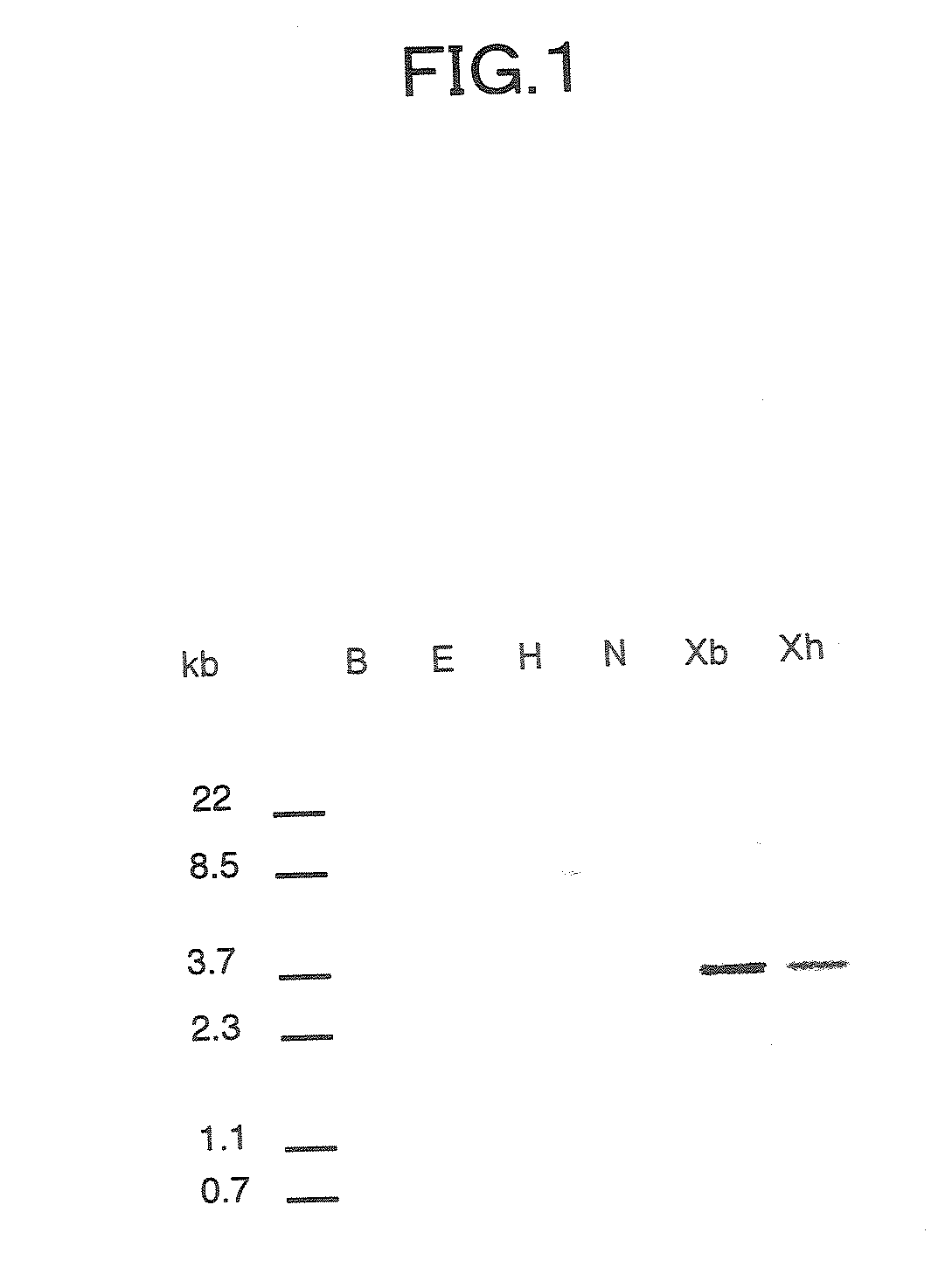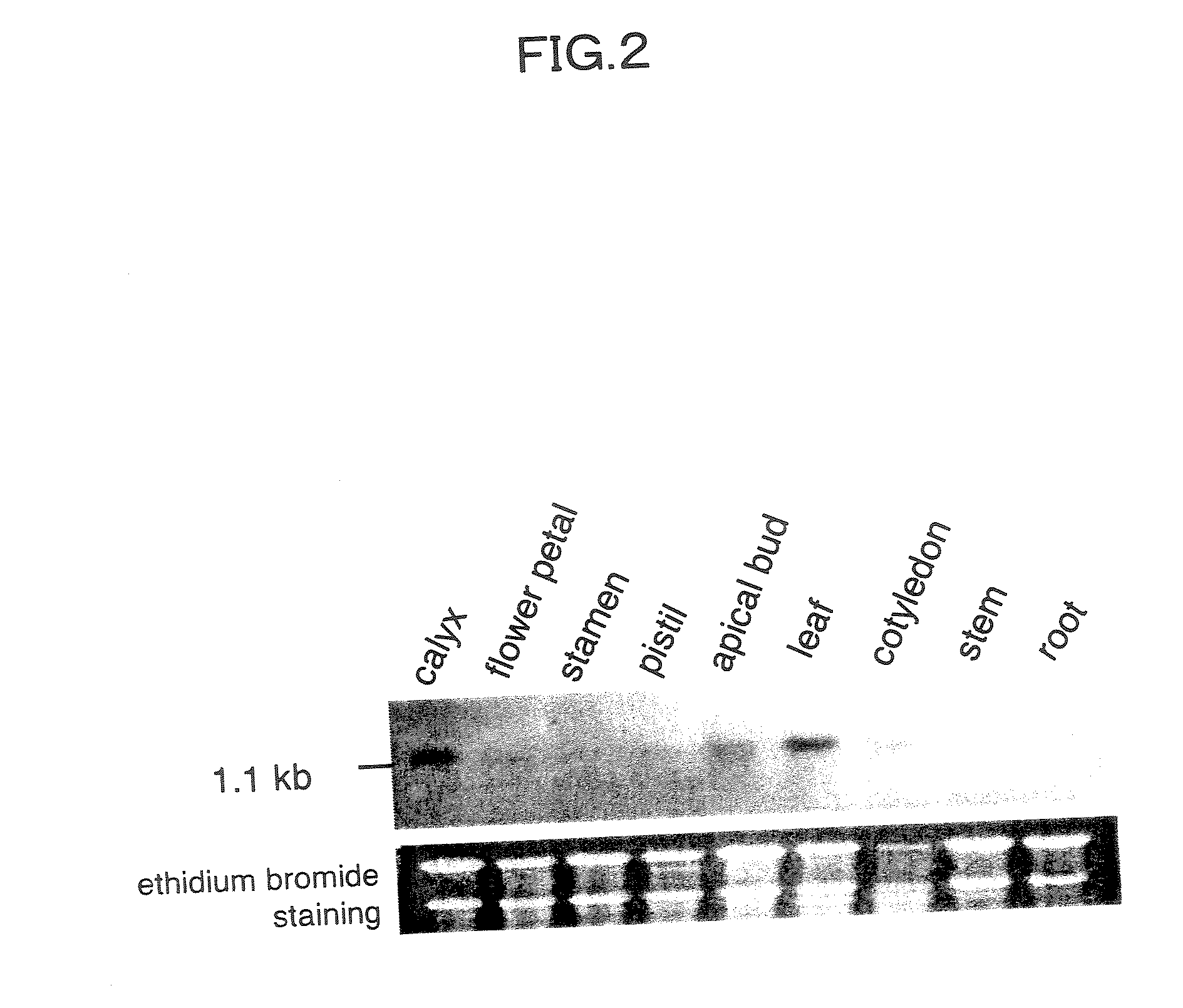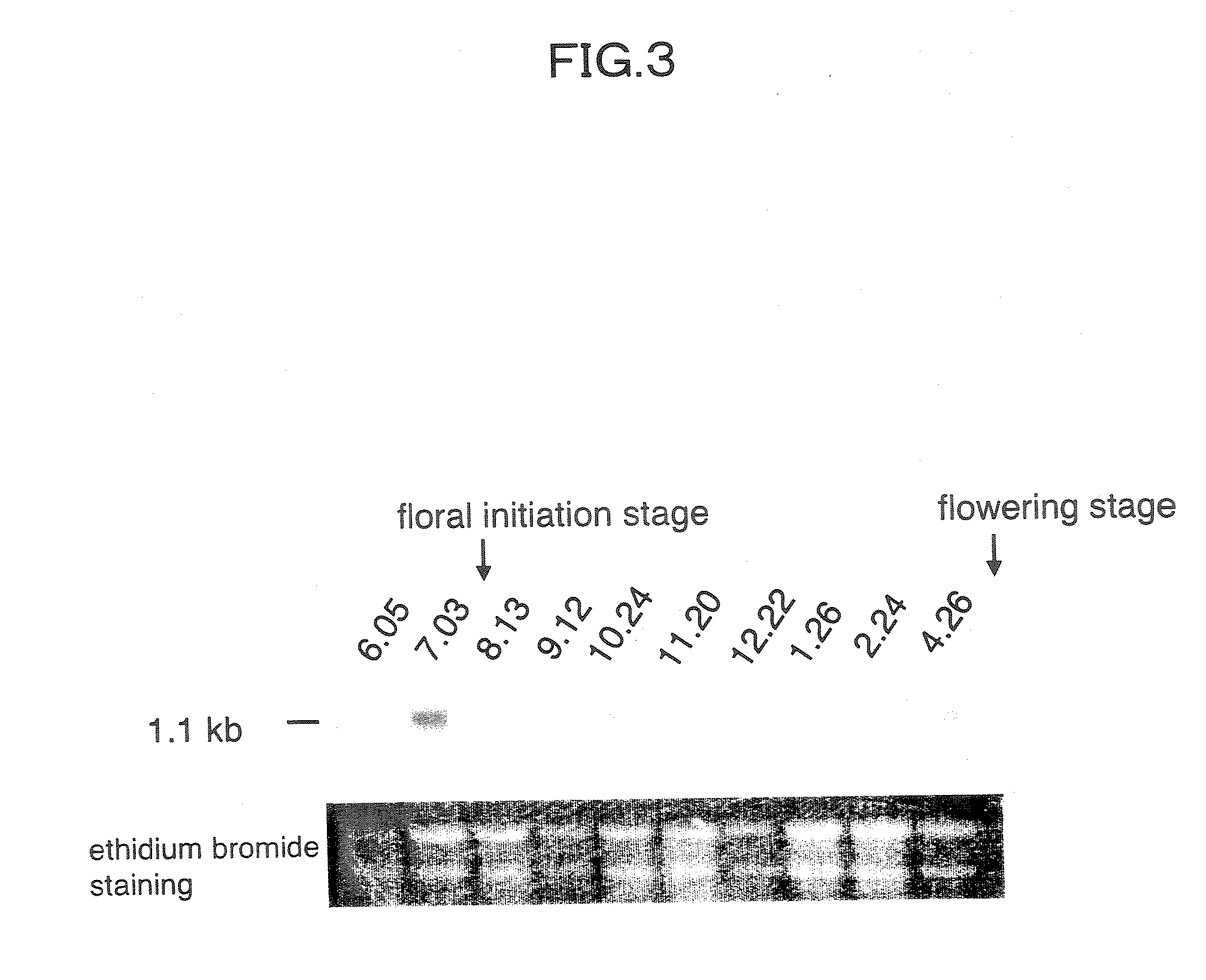Flower-bud formation suppressor gene and early flowering plant
a technology of suppressor gene and flowering plant, which is applied in the field of new flowering plant suppressor gene, can solve the problems of long time for woody plant progress, and long period of time for woody plant improvemen
- Summary
- Abstract
- Description
- Claims
- Application Information
AI Technical Summary
Benefits of technology
Problems solved by technology
Method used
Image
Examples
example 1
Isolation of MdTFL Gene
(1) Apple Plant Employed in the Following Experiments
[0121] 15 to 16-year old Jonathan apples (Malus x domestics cv. Jonathan) grafted to Maruba rootstocks were used.
(2) Preparation of poly (A)+ RNA
[0122] Before and after floral initiation stage (differentiation of flower-bud), that is, from July to September, the shoot apices of the plant of (1) above were collected, and then total RNA was prepared by the CTAB method. Specifically, 3 g of frozen apple shoot apex was crushed into a powdery form, suspended in a 3 mL of 2×CTAB solution (2% CTAB, 0.1 M Tris-HCl, pH 9.5, 20 mM EDTA, 1.4 M NaCl, 1% 2-propanol), and then incubated at 65° C. for 10 minutes. The solution was subjected twice to extraction using chloroform isoamyl, added with 1 / 4 volume of 10 M lithium chloride, and then allowed to stand at −20° C. for 2 hours to obtain precipitated RNA. Subsequently, centrifugation is performed at 12,000×g for 10 minutes 4° C. to collect the precipitated RNA.
[01...
example 2
Southern Blot Analysis of MdTFL Gene
(1) Preparation of Genomic DNA
[0137] From the leaves of an apple plant “Jonathan apple,” 1 genomic DNA was prepared by a CTAB method. Specifically, 3 g of apple leaves were frozen in liquid nitrogen, and then quickly crushed in mortar to obtain a powder form. To remove sugars, an extraction buffer (10% polyethylene glycol 6000, 0.35 M sorbitol, 0.1 M Tris-HCl pH 7.5, 1% 2-mercaptoethanol) was added and mixed well in a 50 mL tube. Then, centrifugation was performed at 12,000×g for 5 minutes at room temperature. The supernatant was discarded, and then to the pellet 9 mL of a lytic buffer (0.35 M sorbitol, 0.1 M Tris-HCl pH 7.5, 1% 2-mercaptoethanol) and 1 mL of 10% sarcosine were added, followed by gentle agitation at room temperature for 10 minutes. Then, 10 mL of 2×CTAB (2% CTAB, 0.1 M Tris-HCl pH 9.5, 20 mM EDTA, 1.4 M NaCl, 1% 2-mercaptoethanol) was added, and then the solution was gently shaken at 56° C. for 20 minutes.
[0138] After the abov...
example 3
Northern Blot Analysis of MdTFL Gene
(1) Preparation of RNA
[0142] Total RNA was prepared by the method described in Example 1 (2) above from each apple plant organs including calices, flower petals, stamens, pistils, shoot apices, leaves, cotyledons, stems and roots. In addition, shoot apices and flower-bud portions of the apple plants were collected from June to April of the following year at preset intervals, and then total RNAs of the shoot apices of the flower buds collected at each time were prepared.
(2) Hybridization
[0143] 10 μg of the total RNA obtained in (1) above was subjected to formaldehyde denaturation 1.2% agarose gel electrophoresis, and then transferred to a nylon membrane. The membrane was immersed in a pre-hybridization solution (5×SSC, 10× Denhardt's solution, 10 mM Na2PO4 (pH 6.5), 0.5% SDS, 50% formamide, 10 mg / mL salmon sperm DNA) at 65° C. for 1 hour to perform pre-hybridization. Subsequently, hybridization was performed using an RNA probe that had been l...
PUM
| Property | Measurement | Unit |
|---|---|---|
| temperature | aaaaa | aaaaa |
| temperature | aaaaa | aaaaa |
| pressure | aaaaa | aaaaa |
Abstract
Description
Claims
Application Information
 Login to View More
Login to View More - R&D
- Intellectual Property
- Life Sciences
- Materials
- Tech Scout
- Unparalleled Data Quality
- Higher Quality Content
- 60% Fewer Hallucinations
Browse by: Latest US Patents, China's latest patents, Technical Efficacy Thesaurus, Application Domain, Technology Topic, Popular Technical Reports.
© 2025 PatSnap. All rights reserved.Legal|Privacy policy|Modern Slavery Act Transparency Statement|Sitemap|About US| Contact US: help@patsnap.com



